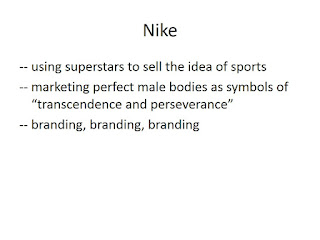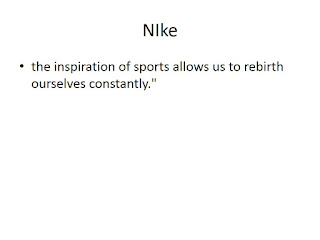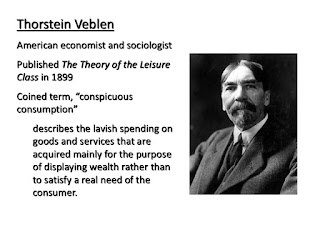
1. Review ideas from cool
2. Today's Reading
https://medium.com/@howard24/the-nba-and-blackness-control-and-commodification-f3f77a77b206
1. Commodification is a core idea of the operation of consumer culture. What does it mean in Chinese? In this story, what is the NBA commodifying?
2. Who was the major driver of the NBA's cultural change?
3. For White viewers of the NBA, what is the problem with the NBA?
4. How did the NBA first attempt to handle this "problem"?
5. In the end, what did the NBA do about the "problem"?
6. When black culture is commodified, what is removed so it can be sold to mass audiences?
====================================
Iverson: the famous crossover
https://www.youtube.com/watch?v=puXbS6qEfvY
=======================================
You got a fast car
I want a ticket to anywhere
Maybe we make a deal
Maybe together we can get somewhere
Anyplace is better
Starting from zero got nothing to lose
Maybe we'll make something
Me, myself I got nothing to prove
You got a fast car
I got a plan to get us out of here
I been working at the convenience store
Managed to save just a little bit of money
Won't have to drive too far
Just 'cross the border and into the city
You and I can both get jobs
And finally see what it means to be living
You see my old man's got a problem
He live with the bottle that's the way it is
He says his body's too old for working
His body's too young to look like his
My mama went off and left him
She wanted more from life than he could give
I said…
Amerikka's most wanted
Ice Cube with Da Lench Mob, I got it goin' on
A nigga that's livin' in the city of the criminal zone
One-time can't keep the law in order
'Cause everybody's goin' crazy for a quarter
You're tuned in to the number one crew in the area
The way I'm talkin' I'm scarin' ya
I'm darin' ya to raise hell and bail and brag and sag
Or beat down for ya flag
'Cause if you is or you ain't a gangbanger
Keep one in the chamber
'Cause you'll get them thangs put on ya son
Ice Cube has got the 4-1-1
All the ol' school house fellows are crooks
So I get jealous looks
They keep thinkin' did my head grow?
Will the boys in the hood have to beat down Ice Cube?
Hell no, I'll static son, you'll see it's okay
I keep my nine anyway
For the day one of my homies wanna squab
I'm still rollin' wit Da Lench Mob
Don’t Kill My Baby and My Son
Words and Music by Woody Guthrie
As I walked down that old dark town
In the town where I was born,
I heard the saddest lonesome moan
I ever heard before.
My hair it trembled at the roots
Cold chills run down my spine,
As I drew near that jail house
I heard this deathly cry:
O, don't kill my baby and my son,
O , don't kill my baby and my son.
You can stretch my neck on that old river bridge,
But don't kill my baby and my son.
Now, I've heard the cries of a panther,
Now, I've heard the coyotes yell,
But that long, lonesome cry shook the whole wide world
And it come from the cell of the jail.
Yes, I’ve heard the screech owls screeching,
And the hoot owls that hoot in the night,
But the graveyard itself is happy compared
To the voice in that jailhouse that night.
Then I saw a picture on a postcard
It showed the Canadian River Bridge,
Three bodies hanging to swing in the wind,
A mother and two sons they'd lynched.
There's a wild wind blows down the river,
There's a wild wind blows through the trees,
There's a wild wind that blows 'round this wide wide world,
And here's what the wild winds say:
O, don't kill my baby and my son,
O, don't kill my baby and my son.
You can stretch my neck on that old river bridge,
But don't kill my baby and my son.

REFERENCE FOR INTEREST ONLY:
http://www.theatlantic.com/entertainment/archive/2016/04/crossover-appeal/476910/
Allen Iverson’s Crossover Appeal
The player has entered basketball’s hall of fame. But what does his life really mean?
VANN R. NEWKIRK II APR 5, 2016
If I close my eyes, I can still picture it. The defender pulls up his shorts and enters a crouch, his arms stretching seven feet from Allen Iverson’s ankle to the passing lane to the right. Then, too quick to even notice, Iverson feints left and stops, putting the defender off balance for just a millisecond. By the time the defender is back in position, with his weight now on his left foot, Iverson does it. A lightning-fast hesitation move turns the defender in the wrong direction. By the time he recovers, Iverson is already in his shooting motion. Pure.
That night in 1997 was the night I became an Allen Iverson fan. What he did to that defender, Michael Jordan, the greatest player of all time, made the box score unimportant. He had done the impossible. He had made God bleed.
19 years later, Iverson was put in the basketball hall of fame with other famous players he had defeated. Along with a class of NBA giants including Shaquille O’Neal and Yao Ming, Iverson was inducted into the Naismith Hall of Fame yesterday. But with that, comes a reflection. Perhaps more than any player––including Michael Jordan and LeBron James––Iverson has been at the center of a culture war that still controls the sport.
I remember the first name brand pair of basketball shoes I owned. My grandmother, on a secret mission to avoid strict orders from my father, took me to the mall. The display case at the front of the store had them, a puffy pair of white and red sneakers with thick air-filled bubbles in the heels. They were Iverson’s signature shoes, the title “Question” a play on words on one of his nicknames, “The Answer.” I begged my grandmother to buy me a pair, and even though the only pair available was two sizes too big, I packed them in my bag with a sock stuffed inside each shoe so I could change into them at school away from my father’s watching eye. At school I stepped into the Iverson culture war.
“You think you a rapper with them Jordans on?” My gym teacher pointed to my shoes, which I had already explained were Iversons and not Jordans. Like most gym teachers I’ve ever had, he was a big white man whom I suspect played football somewhere at some point. He pointed again. “That’s what’s wrong with sports.”
I don’t remember my response, but I remember my profound feeling of unease, standing there as I was, examined by my white gym teacher in front of mostly white classmates. I’ve loved basketball and hip-hop for as long as I can remember, and the idea that one could be corrupting the other left me with the impossible task of trying to decide which piece of me I loved more.
Basketball itself was facing the same dilemma. Iverson’s rise to fame––and my childhood as a basketball fan––came during a sort of uneasy peace between the NBA, black culture, and its most popular form, hip-hop. Jordan’s marketing came on the wings of hip-hop, and his shoe line has become an integral part of the art’s DNA. By the time Iverson was drafted in 1996, the short shorts and white socks of basketball past had been replaced, Phi Slama Jama alumni were winning rings, and Scoop Jackson was raising hell at SLAM magazine. Hip-hop––some version of it––was very much at the center of basketball and has been since.
But there were lines and taboos that made hip-hop expression sanitized in the NBA. The league’s marketing displayed the popular elements of hip-hop while cleaning away much of the racial issues and social commentary that are its soul. Basketball was black––but not too black. Jordan’s brand was propelled by hip-hop, but he kept a distance from it himself and maintained a clear sense of apathy toward most cultural issues. The NBA, then as now, steered away from big social concerns and crises. Party rap was all fun and good, but more and more music became hardcore tales of life in the American wastelands, following the country’s obsession with jail and violence.
Iverson’s generation of artists and athletes represented the first group of black people who had been raised entirely on the phenomenon of hip-hop in all its diverse forms. His contemporaries—Shaq, Kobe, Chris Webber, Ron Artest—all represented some aspect of this new paradigm, but Iverson, with his durags, tattoos, baggy clothes, jewelry, braids, and crossovers, embodied it in a form that couldn’t be denied. It was impossible to pay attention to Iverson and ignore the deep history of poverty and inequality that animated his every step. His flashy superhero alter ego of “AI” was glitzy gold over sandpaper, a facade of pride laid over a foundation of pain. Iverson was the tough gristle of black America that the NBA machine couldn’t digest.
The isolation-driven, flashy merger of basketball and hip-hop in streetball showed up in his game, and like many of his peers (and many black youth, including me) he even tried his hand at rapping in 2000. The result was terrible––a profane, misogynistic, homophobic blur of clumsy lines. The NBA was horrified, and pressure from its then-commissioner David Stern killed the next album. There were other things too. An ugly history of possible domestic abuse and neglect, drinking problems, and money problems. But, as is true for all hip-hop fans, for me and for many people like me, he was the scowling specter of a secret identity that had to be buried in order to succeed. Despite his considerable and numerous warts, Iverson was an icon to some part of us. Not a role model, but a persona who represented a kind of freedom to be that we may never have.
That freedom had become a full-on liability by 2005. After the infamous “Malice at the Palace,” in which multiple players fought each other and fans in an extended brawl, the league needed to change its image. Lingering unease about the “thuggishness” the NBA promoted via hip-hop spilled onto talk radio. Iverson wasn’t present at the brawl, but in the eyes of many, his presence seemed to hang over it. The dress code the league passed seemed to be directly targeted at him. No jerseys, no durags, no jewelry. And so the NBA closed the book on Iverson. I felt like it had closed the book on a part of me as well.
That dress code would in some ways hand official ownership of the NBA’s image to LeBron James, who’s been much more socially active than Jordan, but has adopted much of his careful balancing act between owning the PR advantages of hip-hop while keeping his distance from its rougher elements in wider society. The NBA today is a machine, a fully realized version of the American consumerist relationship with black culture. The deep roots of marginalization have tied blackness, basketball, and hip-hop together as tightly as soccer and samba in Brazil’s favelas. And just as soccer federations mine the global sport of poverty and marginalization for immense profit, so the NBA extracts, purifies, and sanitizes black culture and talent for a wider audience. Iverson was the diamond it couldn’t quite polish.
More than a decade after the NBA unofficially denounced Iverson, his legacy is being reconsidered. Iverson was ostensibly inducted into the Hall for his basketball ability, his prolific scoring, and the way in which he took a talentless Sixers team to the Finals. But the moments I remember most are those that blend sports and culture, and that can’t be so easily quantified. I remember the crossover, the shooting sleeves, the tattoos, the braids, the shoes.
Is Iverson’s entrance into the Hall of Fame a validation of the full legacy of Allen Iverson, or––like the current consumerism of the NBA––is it an attempt to digest parts of a phenomenon while ignoring others? Given that Iverson has been granted basketball’s highest honor, it’s a nitpicky question to ask, but it remains a question, nevertheless. Is it possible to celebrate a player—one with no championship rings and a ball-hogging, shot-happy game that history looks on less and less kindly—for what he did without celebrating what he meant?
I ask this as I think back to those games in that middle-school gym. I think we lost most of them; it turns out I am, and have always been, an absolutely awful basketball player. But what I remember most is the joy of emulation and the thrill of defiance. Basketball and hip-hop were my secret gardens, and Allen Iverson highlights watered that garden. There was the electricity of doing what I loved how I loved, a treat stuffed into school days of scouring my language of vernacular and preparing for a public life half-lived. I would reach down and touch my shoes after each game. I’ve always had my answer.
+++++++++++++++++++++++++++++++++++++













































